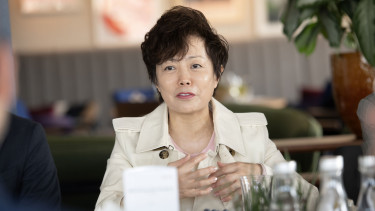COVID-19: New cases, test positivity jump in Hungary


Omicron spreading
The 'fifth wave' of the coronavirus pandemic started in Hungary around 25 or 27 December 2021. On Tuesday, the National Public Health Centre (NNK) shared some information abou the spread of the highly contagious Omicron variant (B.1.1.529) which doubles the number of cases every 1.5 to 3 days. This was the fourth time the NNK shared Omicron-related data, and just like previously its reliability is low. The NNK said Omicron was found in 11% of the samples tested, which translates into 785 cases. Private laboratory Neumann Labs found that 60% of the samples had Omicron in them around Christmas, and the new variant was detected in 78% of the samples only a few days ago.
Positivity rates up
Daily percent positive data are unreliable and so are the short-term averages. Authorities tested nearly 18,000 samples on Tuesday, more than double the Monday figure, yet the positivity rate retreated only to 29.67% from 30.96%. The three-day positivity rate is further up at 28.24% from 21.9% and is significantly higher than a year ago. In fact, every average of the percent positive is (a lot) higher than on the same day of 2021.
More importantly, the 3-day / 21-day percent positive leaped to 154.6% from 120.6%, and the 7-day average of this ratio has risen further to almost 110% from 103.7%, which does not bode well for the future.



The 7-day rolling average of new COVID-19 is also on the rise. (The number of new cases shows a 75% leap in weekly terms, but due to the post-Christmas reporting this should still be taken with a pinch of salt.)

How is the situation in hospitals?
In terms of the hospitalisation of coronavirus patients, we are still better off than a year ago, while there are more of them on ventilator than in the base period.
As of Tuesday night, there were 245 fewer (-8%) people in hospital with SARS-CoV-2 than late on Monday, while their number is down 20% week on week. The number of Covid patients on ventilator dropped by nine (-3%) yesterday and by 14% in weekly terms. There are other indicators, however, that do not paint such a rosy picture on the latest developments (see charts below).



On the charts below the 0% line is important. When the curves are under 0% there’s a decline, when they go over 0% it’s an increase. The changes show that the situation in terms of hospitalisations started to worsen after 20 August.
More importantly, when a value is north of 0% but the curve descends, it means an increase at a slowing rate, rather than a decrease. If the curve is above 0% and ascending, it is an increase at an accelerating rate. When we are under 0% and the curve goes lower, it translates into an accelerating decrease, and when it goes up it marks a decelerating decrease. As you can see, there was a turnaround in the improvement around 27-29 December.

What do the changes mean?
The chart below shows the number of hospitalised Covid patients as a percentage of active cases and the On ventilator / In hospital ratio.
When a pandemic 'wave' starts, the percentage of hospitalised patients relative to active cases always soars, because there is still a relatively low number of official cases due to inferior testing practices, and because early on most people with positive tests are likely in hospital.
The green curve peaks around 7% in every 'wave' and then the ratio starts to drop as authorities 'find' more and more infections. The reason why this curve starts to descend even though the number of hospitalisations goes up drastically is because the increase in new confirmed COVID-19 cases is even more staggering.
When there's a relative calm, the red curve picks up sharply, because only those Covid patients are left in hospital that are in severe condition. The others either recovered and were discharged or died.
Early in these waves this ratio always rises rapidly (low number of tests, many in severe condition in hospital, a lot of them in ICUs), but then the ratio starts to improve.
There was an anomaly here, namely that this trend was broken in late November 2021. The proportion of those in hospital to active cases starts to drop, but the proportion of Covid patients in intensive care (relative to those in hospital) goes up. This indicates that there are too few people in hospital compared to before, i.e. there are more serious cases. As it is not the course of the disease that has become more severe, this indicates insufficient hospitalisation.

While about one third of the population (3.18 mn people) are inoculated with three doses of COVID-19 vaccines, about 3.5 million people have not received a single shot yet. Also, as the effectiveness of vaccines wanes over time, about three million Hungarians have diminished or no protection against coronavirus infection, even after two jabs.
The cabinet has announced a new vaccination campaign for January where Hungarians may, after on-site registration, ask for their first, second or third dose of a COVID-19 vaccine. The shots will be administered at vaccination locations between 2 and 6 p.m. on Thursdays and Fridays and between 10 a.m. and 6 p.m. on Saturdays.


Hungary is to receive another shipment of Pfizer's COVID-19 vaccine for children aged 5 to 11. On top of the 138,000 doses received in December, another 150,000 doses will be delivered in weekly shipments in January 2022. We'll need to see how many of these shots will actually be used, as Hungarian parents are not exactly enthusiastic about having their offspring vaccinated against coronavirus.
Less than 10% of the children in this age group are registered for a jab, and less than 8% of them have been vaccinated so far, which means more than
90% of children aged 5 to 11 in Hungary have not been registered for vaccination against COVID-19 .








